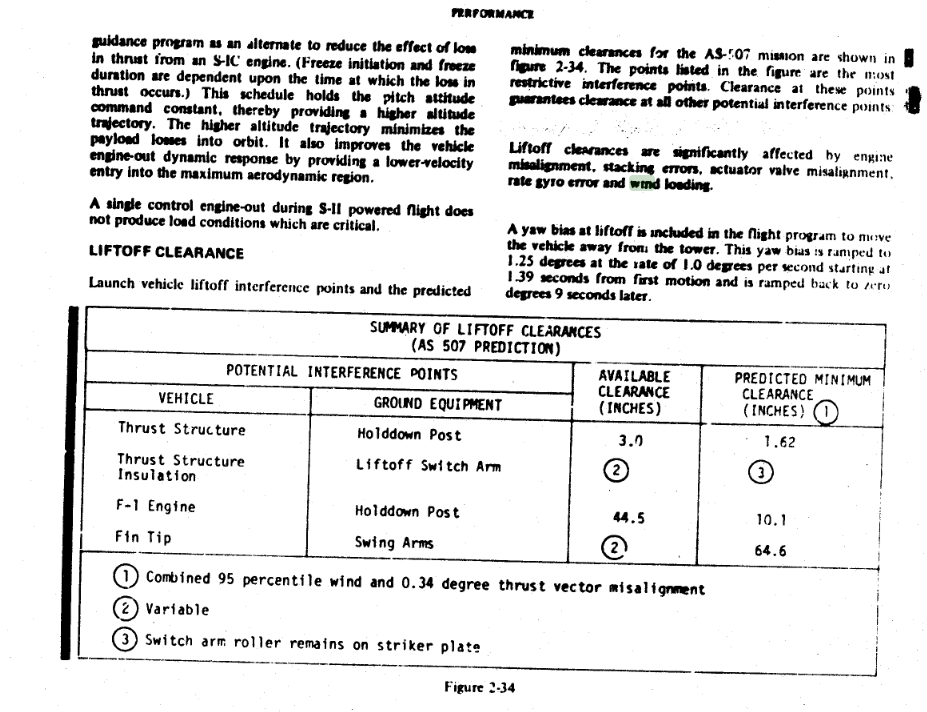Watching this unnamed Saturn V launch (Apollo 13?), I see the gantries pull away, and the rocket takes 13 seconds to clear the tower.
That seems like enough time for crosswinds to act on the rocket, and push it the fairly small distance into the gantries or tower.
I'm aware that the rocket makes a 1.25 degree adjustment away from the tower, but it does not seem like that would be enough; in the video, the rocket still comes quite close to the tower. Further, I understand that maneuver is open-loop, a preprogrammed maneuver; there's no feedback to increase the angle to respond to higher-than-expected wind force.
What prevented crosswinds from pushing the rocket toward the tower? Is it a matter that they didn't launch with unfavorable winds? Is the considerable mass of the Saturn V simply too much for the wind to move appreciably?
How does this work for space launches in general?
